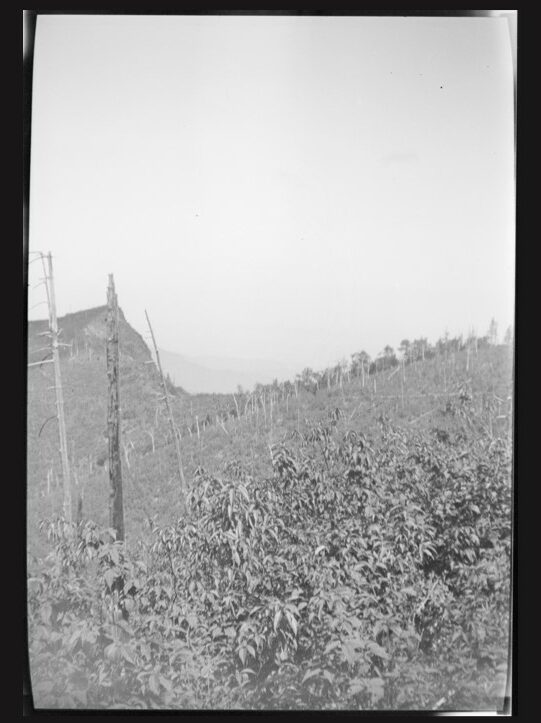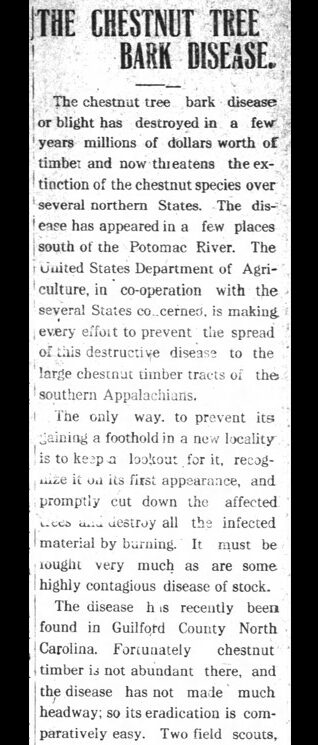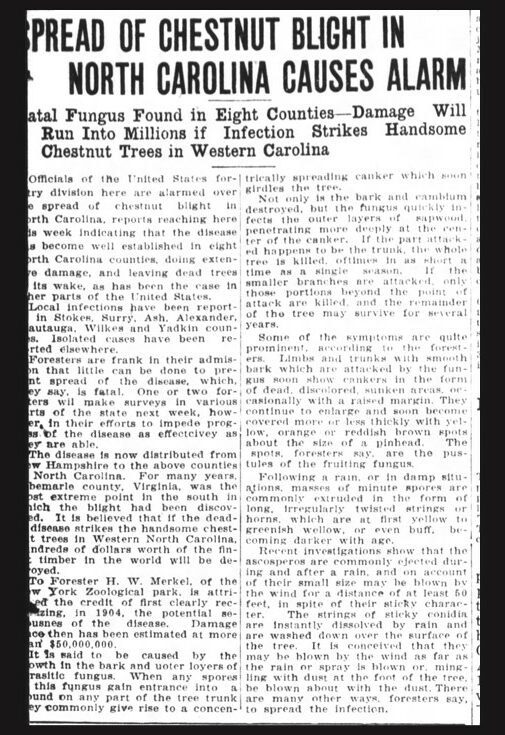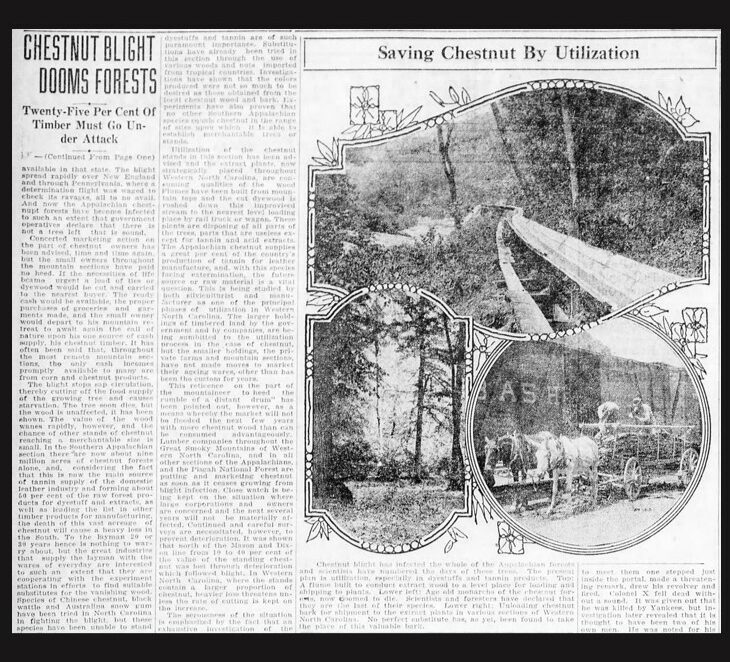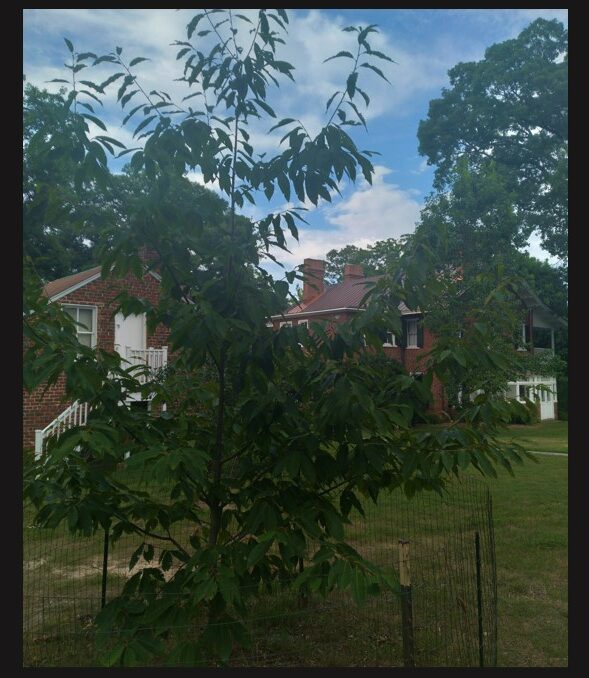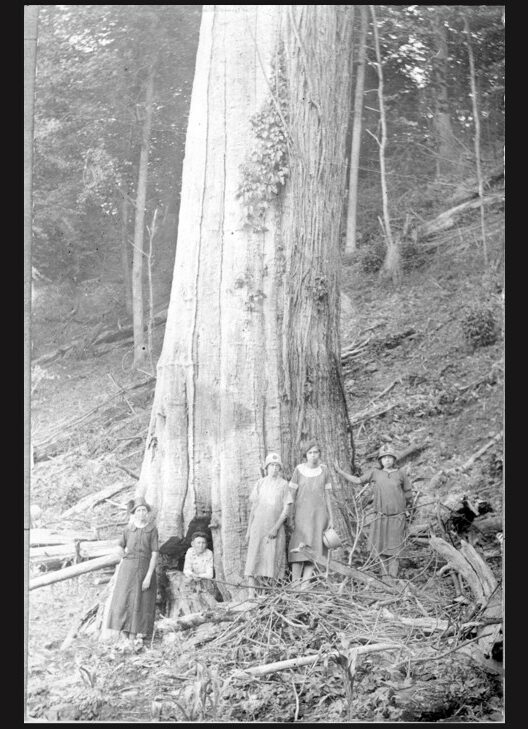
On this day in WNC history: On August 8, 1913, the Jackson County Journal reported the dangerous “Chestnut tree bark disease” destroying timber in the Northeast and threatening the forests of southern Appalachia. With a recently discovered case in Guilford County, NC, the paper urged residents to keep a look out for the disease. By August, 1920 the American chestnut blight was already well established and killing trees in WNC and the foothills.
The American chestnut was easily the most prolific (and largest) tree in Appalachia, comprising up to one third of the hardwood species in some locations. They were of immense ecological and economical value; the incredible biomass produced by their falling nuts and leaves nourished free-ranging livestock and native fauna, while creating rich mountain soils, and they provided an ample source of rot-resistant straight lumber as well as tannin for leather production. The fungal blight that effectively eradicated this species (and damaged chinquapin trees as well) came from Japanese chestnuts introduced in New York sometime before 1904. By 1912, the blight had killed all chestnuts in New York while devastating stands of the trees in nine other Northern states and spreading southward at roughly fifty miles per year.
The blight arrived in North Carolina in Guilford, Surry, and Stokes counties in 1913, likely transmitted on the gear or shoes of timber employees. While state geological and agricultural experts scoured the western counties for the disease, attempting to isolate and destroy the infected trees, lumber companies also took this chance to rapidly cut some stands of chestnuts in the proposed Great Smoky Mountains National Park. Felix Hooper of Jackson County later recalled being informed of the spreading blight by a Pennsylvania man, and just two years later (around 1928) he saw it killing trees near his home. By the 1940s, most all of the American chestnuts in southern Appalachia were dead or dying. While their canopy space was filled by the quick-growing tulip poplar trees, their demise created an ecological void that affected numerous species through loss of habitat or food.
Today, this once vital and ubiquitous species is seldom seen in the wild. Old stumps may sprout for decades, but the saplings typically die within a few years. Here at the Smith-McDowell House we have several hybridized chestnuts which are blight resistant and, with any luck, may grow to a ripe old age and size.
Large dead chestnut near Tremont Falls, TN c 1920, courtesy Great Smoky Mountains National Park and Open Parks Network
Dead chestnut prior to CCC removal in Haywood County, NC, 1936, courtesy Great Smoky Mountains National Park and Open Parks Network
Jackson County Journal, Aug 8, 1913
Asheville Citizen, Aug 15, 1920
Asheville Citizen, Feb 20, 1927
Hybrid chestnut at the Smith-McDowell House, AMoH photo

